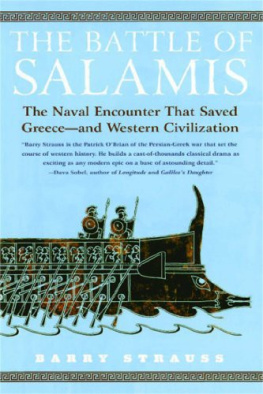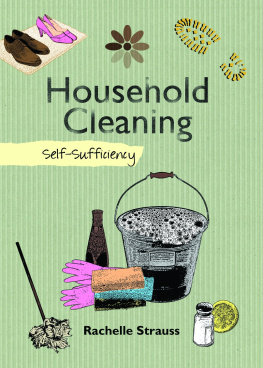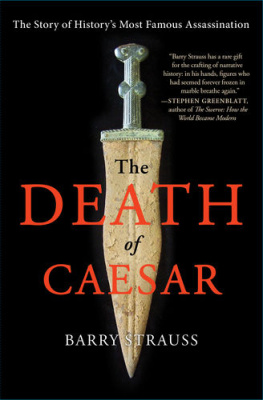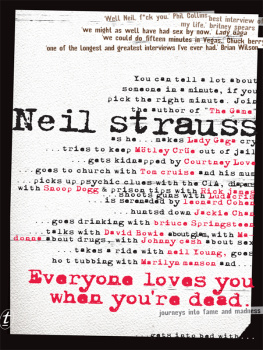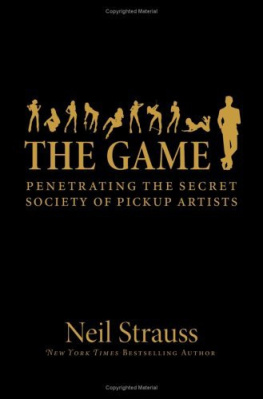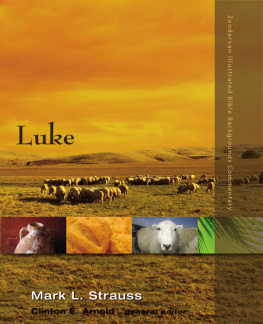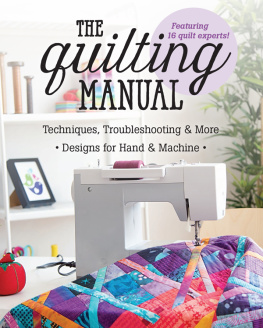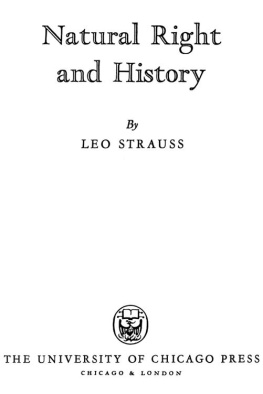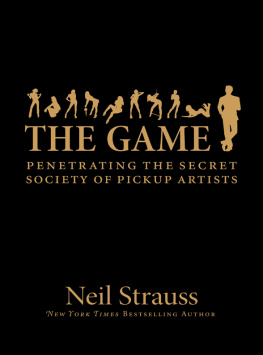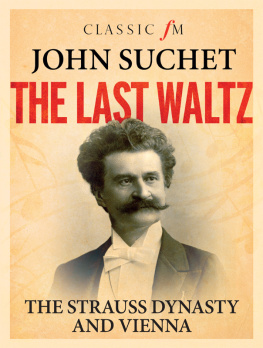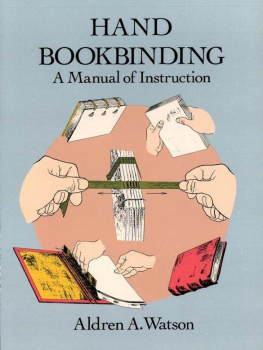Strauss - From head to hand: art and the manual
Here you can read online Strauss - From head to hand: art and the manual full text of the book (entire story) in english for free. Download pdf and epub, get meaning, cover and reviews about this ebook. City: Oxford, year: 2010, publisher: Oxford University Press USA - OSO, genre: Romance novel. Description of the work, (preface) as well as reviews are available. Best literature library LitArk.com created for fans of good reading and offers a wide selection of genres:
Romance novel
Science fiction
Adventure
Detective
Science
History
Home and family
Prose
Art
Politics
Computer
Non-fiction
Religion
Business
Children
Humor
Choose a favorite category and find really read worthwhile books. Enjoy immersion in the world of imagination, feel the emotions of the characters or learn something new for yourself, make an fascinating discovery.

- Book:From head to hand: art and the manual
- Author:
- Publisher:Oxford University Press USA - OSO
- Genre:
- Year:2010
- City:Oxford
- Rating:3 / 5
- Favourites:Add to favourites
- Your mark:
- 60
- 1
- 2
- 3
- 4
- 5
From head to hand: art and the manual: summary, description and annotation
We offer to read an annotation, description, summary or preface (depends on what the author of the book "From head to hand: art and the manual" wrote himself). If you haven't found the necessary information about the book — write in the comments, we will try to find it.
From head to hand: art and the manual — read online for free the complete book (whole text) full work
Below is the text of the book, divided by pages. System saving the place of the last page read, allows you to conveniently read the book "From head to hand: art and the manual" online for free, without having to search again every time where you left off. Put a bookmark, and you can go to the page where you finished reading at any time.
Font size:
Interval:
Bookmark:
From Head to Hand
Art and the Manual
David Levi Strauss


Oxford University Press, Inc., publishes works that further
Oxford Universitys objective of excellence
in research, scholarship, and education.
Oxford New York
Auckland Cape Town Dar es Salaam Hong Kong Karachi
Kuala Lumpur Madrid Melbourne Mexico City Nairobi
New Delhi Shanghai Taipei Toronto
With offices in
Argentina Austria Brazil Chile Czech Republic France Greece
Guatemala Hungary Italy Japan Poland Portugal Singapore
South Korea Switzerland Thailand Turkey Ukraine Vietnam
Copyright 2010 by David Levi Strauss
Published by Oxford University Press, Inc.
198 Madison Avenue, New York, New York 10016
www.oup.com
Oxford is a registered trademark of Oxford University Press
All rights reserved. No part of this publication may be reproduced,
stored in a retrieval system, or transmitted, in any form or by any means,
electronic, mechanical, photocopying, recording, or otherwise,
without the prior permission of Oxford University Press.
Library of Congress Cataloging-in-Publication Data
Strauss, David Levi.
From head to hand : art and the manual/David Levi Strauss.
p. cm.
Includes index.
ISBN 978-0-19-539122-0
1. ArtPsychology. 2. Creation (Literary, artistic, etc.)
3. Mind and body. I. Title.
N71.S879 2010
700.1dc22 2009023760
9 8 7 6 5 4 3 2 1
Printed in the United States of America
on acid-free paper
To Robert Duncan and Leon Golub,
for their disparate guidance
Both of my grandfathers worked with their hands. One was a carpenter and the other was a blacksmith. I grew up in the latters shop, entranced by the forge. His son, my father, went to work early, supporting his family at age 12 by tending threshing machines during the wheat harvest, and later running his own gas station and repair shop on Old Highway 40 in Chapman, Kansas. We lived across the tracks from the station.
I always worked with my hands, and when I began to write, that seemed like handwork to me, as well. And I always thought of artists and writers as workers, at base, ultimately involved in the transformation of matter by hand. In an increasingly mediated world, one of the most radical things artists can do is to use their hands, especially in the transformation of matter in its most telluric forms: earth, stone, wood, pigments, and oil.
This book traces a persistent concern of my work in criticism over the past 20 years: the passage from idea to object in the plastic arts. This passage can take a lifetime or happen instantaneously in the works of painters and sculptors. It is reciprocal, since once made by hand, the work is recovered by the eye, for the mind. As Leo Steinberg taught us, the eye is a part of the mind. How does something that begins as an idea or image in the mind become material? How is the work of the hand influenced by the movements of the mind and vice versa? Thoreau said that we reason from our hands to our heads. Heidegger said: All the work of the hand is rooted in thinking.
A number of themes recur throughout this book: the relation between the sacred and the mundane; considerations of labor in the process of creation; dance and other somatic dialogues; various transformations of trees; and the distinction between tradition and convention and how things get passed down from one generation to another.
In the end, and much to my surprise, this ended up being a book about ancestors, mine and ours. It is dedicated to two of my most important guides, the poet Robert Duncan and the painter Leon Golub, and it ends with tributes to two writers I revere, John Berger and Leo Steinberg. But I have learned a great deal from all the artists and writers invoked in these pages, and I am grateful to each of them for their gifts.
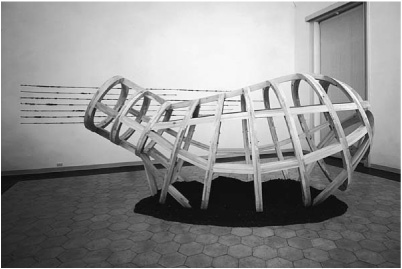
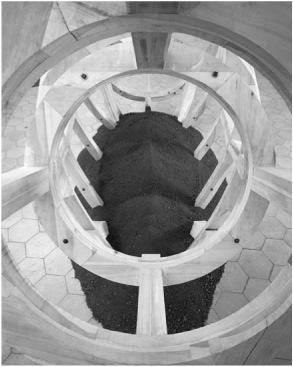
Two views of Vessel (1997) by Martin Puryear, photographed by Mimmo Capone; courtesy of the artist
SOME LINES FOR MARTIN PURYEAR
What is necessary is
containment,
that that which has been found out by work may, by work, be passed on
(without due loss of force)
for use
USE
Charles Olson, The Praises (1950)
For some time, Martin Puryear kept a red-tailed hawk in large mews hed built next to his own house. He was training the hawk to hunt; or rather, he and the hawk were training each other. The first time I went to see the bird, I found it perched motionless on a long wooden pole that ran across the back of its enclosure. Standing before the mews, I received the full force of the hawks gaze. It was piercing and fierce, and caused me to take a step back. But what was ultimately more affecting and memorable was the quality of the hawks attention. I dont remember ever being looked at like that before. I could feel it changing me into something else.
When viewers and critics dwell excessively on the craft in Puryears sculptures, they are responding to the extraordinary quality of attention that is brought to bear in these works. Concentrating on their craft alone is a way of avoiding or delaying the repercussive force of this attention, and the changes it might require of us. In an age of mass-produced mass culture (produced not by but for the masses), making things by hand has unavoidable political and social ramifications. It puts human beings in a direct, rather than hidden, relation to labor, and it is this hidden relation that makes our alienation from work and its use possible. Interrupting this hidden relation renders the human confrontation with matter palpable.
But the overweening emphasis on the fine facture of Puryears works occludes more than it reveals. These sculptures look the way they do because they need to in order to mean what they do. The labor that is compressed into them allows them to work over time, and the time it takes to make them is the time taken to mean it. That they so often employ specialized tradesmens skills in their making allows them to work at the edges of utilityvessels that might be dwellings in the shapes of bodiesand in that fertile seam between representation and abstraction.
Thoreau said that we reason from our hands to our heads. We know and understand things as we apprehend them through the labor and pleasure of our hands, so we tend to proceed from the perceptual to the conceptual and back again. When one side of the relation is overemphasized, an imbalance occurs. The craft of Puryears sculptures gives them a presence and a concentrated intensity that can be daunting. It can also blind one to their transformational suppleness, and to the subtle, often precarious inquiries they engage and enact.
One of the most persistent of these inquiries has involved questions of identity and difference. How is one thing the same as or different from another? In the painted bentwood wall pieces of 198182, this inquiry sometimes takes a comic turn, as in Big and Little Same (1981), where two elliptical headsnearly identical except in sizemeet and seem to contemplate one another across a divide that turns out to be the distance between their respective ends of the same circle. In
Next pageFont size:
Interval:
Bookmark:
Similar books «From head to hand: art and the manual»
Look at similar books to From head to hand: art and the manual. We have selected literature similar in name and meaning in the hope of providing readers with more options to find new, interesting, not yet read works.
Discussion, reviews of the book From head to hand: art and the manual and just readers' own opinions. Leave your comments, write what you think about the work, its meaning or the main characters. Specify what exactly you liked and what you didn't like, and why you think so.

